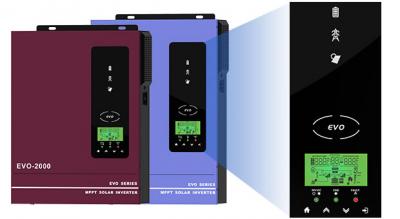
Inverters are essential devices in solar power systems, and understanding the power units of inverters is crucial for correct selection and use. KW and KVA are two units of power, but they represent concepts with distinct differences.
KW (kilowatts) refers to the actual active power consumed or generated by a circuit, device, or system. It represents the actual power generated or consumed in the circuit and is the actual power generated by the inverter during its operation.
KVA (kilovolt-amperes) represents the maximum apparent power that a circuit, device, or system can withstand. It is a more comprehensive concept that includes the product of the current magnitude and voltage magnitude required by the circuit, representing the maximum load capacity of the system.
In general, KW is smaller than KVA because the actual power generated or consumed by a device is usually smaller than its maximum power. This depends on the power factor and load characteristics of the device. If the power factor of the device is 1 (purely resistive load), the values of KW and KVA are equal. However, in the presence of non-purely resistive loads such as inductors and capacitors, KW will be smaller than KVA.
The specific relationship between KW and KVA can be described by the power factor, which is the ratio of actual power (KW) to apparent power (KVA). It can be converted using the following formula:
KW = KVA * power factor
Or conversely:
KVA = KW / power factor
The power factor is between 0 and 1, representing the ratio between actual power and apparent power in the load. A higher power factor indicates a higher proportion of actual power in the circuit, resulting in a higher level of efficient energy utilization.
When selecting and using all-in-one inverters, understanding the importance of power factor cannot be ignored. The power factor is the ratio of actual power to apparent power in a circuit, reflecting the level of efficient energy utilization in the load. In AC circuits, the power factor directly affects the efficiency of energy utilization.
When the power factor is 1, the energy in the circuit is fully utilized, while when the power factor is less than1, there is energy waste in the circuit, and the energy efficiency of the circuit is lower. Therefore, understanding and considering the power factor is a key factor in selecting inverters to ensure that they can effectively and stably meet the energy requirements in practical applications.
When purchasing and using all-in-one inverters, considering the relationship between KW and KVA, as well as the influence of power factor, will help accurately match the equipment capacity, improve system efficiency, and ensure stable and reliable power output.


